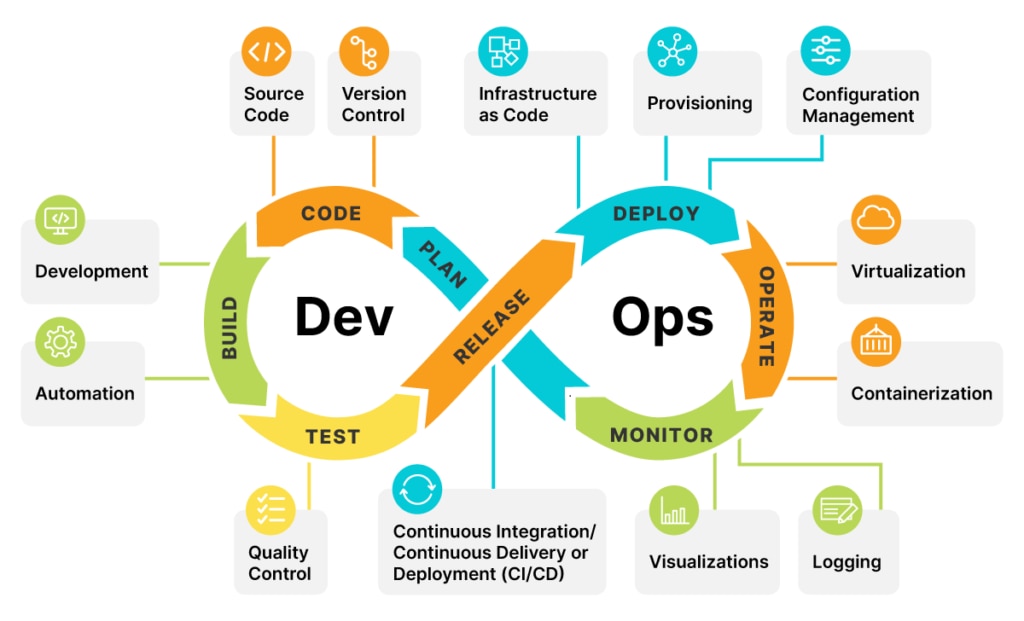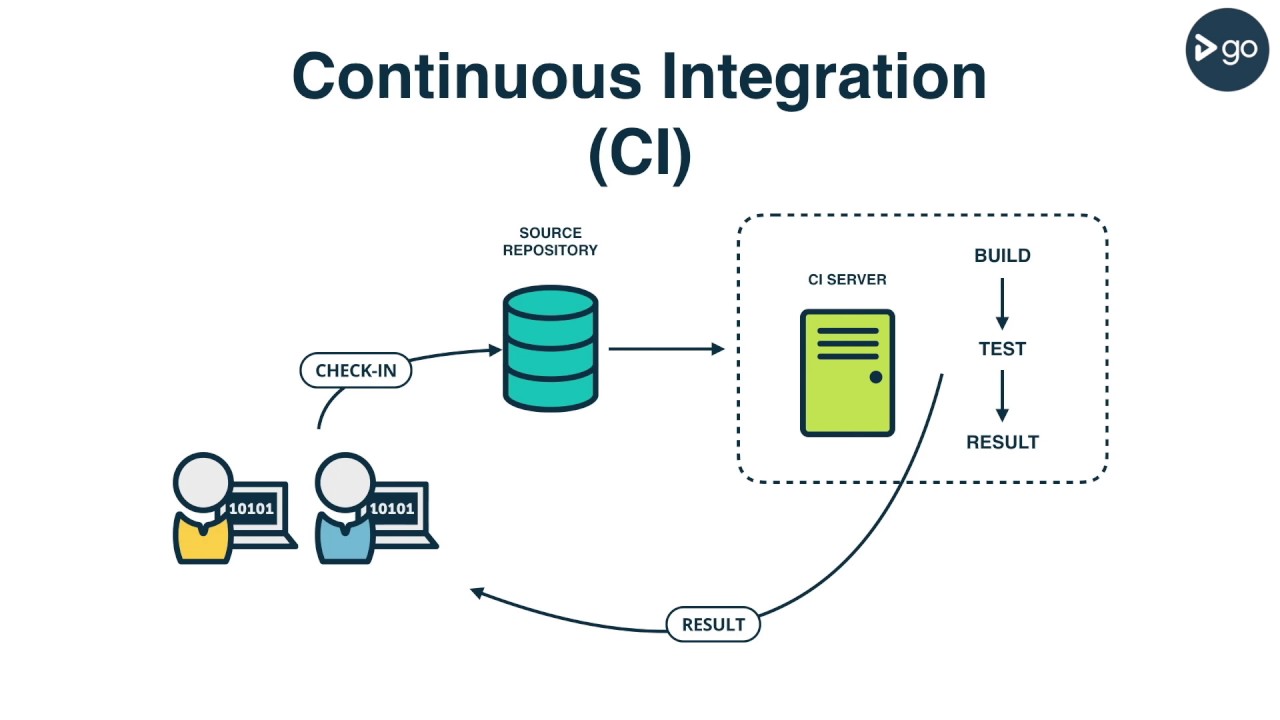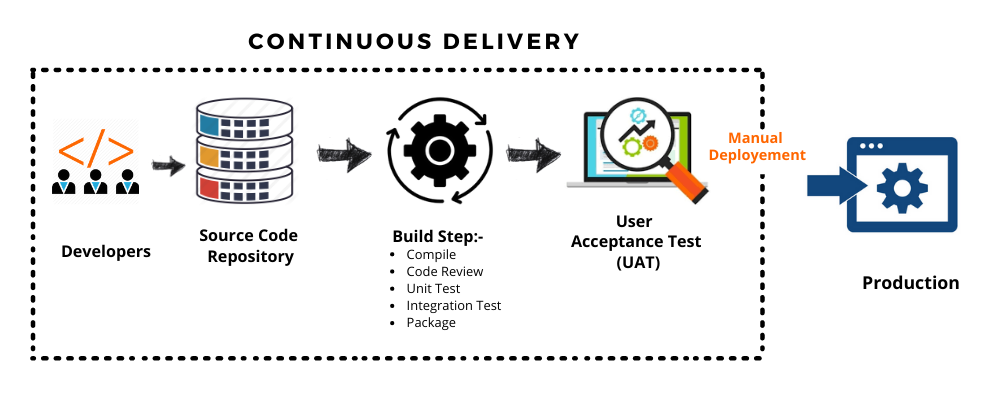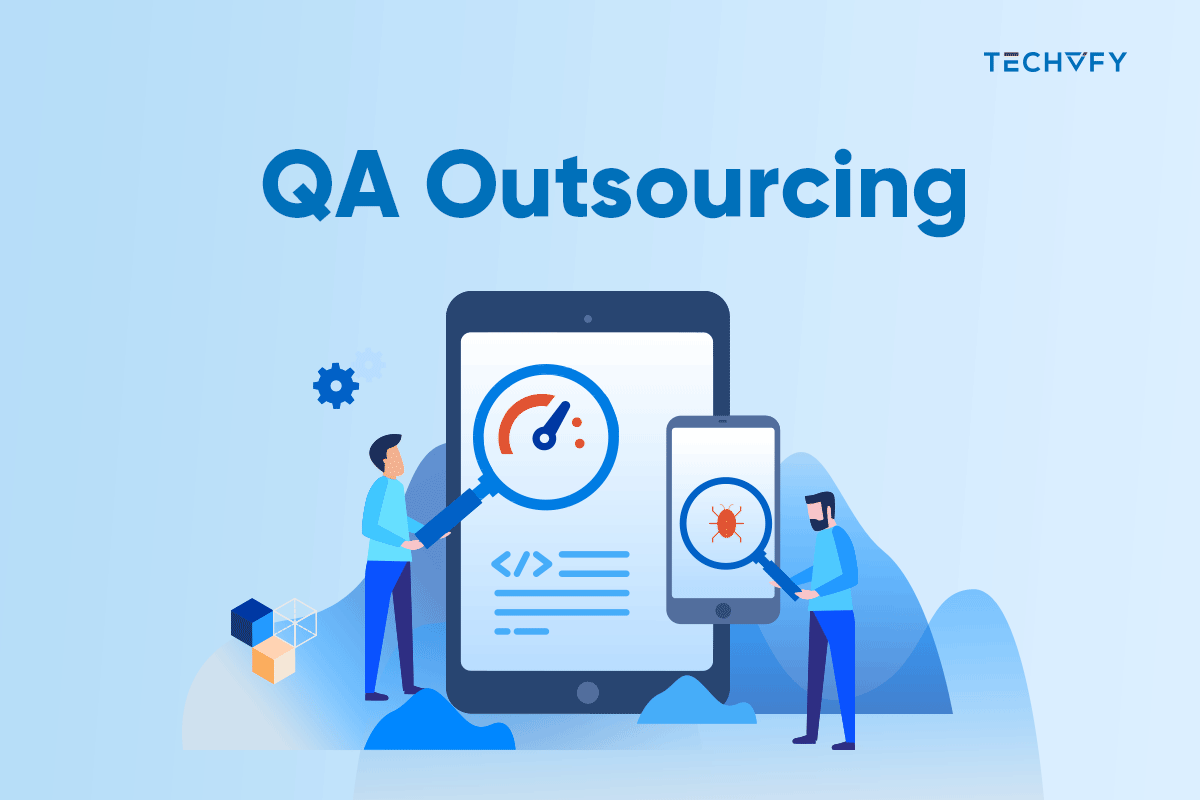Speed, quality, and security are paramount in today’s dynamic software landscape. According to AWS and Strongdm, with a staggering 24 times reduction in deployment failures and three times faster feature delivery, AWS DevOps is the transformative force behind these achievements. This article will explore the core of AWS DevOps, including its basis, services, tools, and best practices.
I. What is AWS DevOps?
AWS DevOps is Amazon’s solution for applying the DevOps methodology utilizing its cloud platform and specialized tools and services. It provides capabilities that help organizations automate and streamline their software development and delivery processes.
II. Importance of AWS DevOps in modern software development
AWS DevOps is crucial to modern software development because it offers tools and methods that assist enterprises in bettering their software development and delivery processes. The strengths of AWS DevOps can help organizations to:
- Reduce the time it takes to bring new features to market: With AWS DevOps, many software development and delivery tasks, such as creating, testing, and deploying apps, become automated. As a result, businesses can introduce new features and goods to the market more quickly.
- Improve the quality and reliability: By automating the build, test, and deployment processes, AWS DevOps enables enterprises to enhance the quality and dependability of their software. By doing this, fewer mistakes enter the production process.
- Boost operational effectiveness: AWS DevOps helps enterprises boost operational effectiveness by automating infrastructure provisioning and administration. This solution gives IT personnel more time to work on projects like creating new features and enhancing the user experience.
- Reduce costs: By balancing the performance and cost of an organization’s AWS infrastructure, AWS DevOps can reduce costs. Because AWS DevOps is a cloud-based solution, businesses can save money on their hardware and software infrastructure to get up and running rapidly.
Learn More On:
III. CI, CD and IaC in DevOps
In DevOps, Continuous Integration (CI), Continuous Delivery (CD), and Infrastructure as Code (IaC) are key practices that help teams develop, integrate, test, deliver, and deploy code more efficiently and reliably.
1. Continuous Integration (CI)
Continuous Integration or CI is a development practice where software code changes are automatically and frequently merged into a shared repository. This solution helps to ensure that code changes are integrated into the main codebase quickly and reliably.
| Benefits | Challenges |
|
|
2. Continuous Delivery (CD)
Continuous Delivery or CD is a set of practices that automates code changes’ deployment to production. By doing this, it is possible to guarantee that users receive bug fixes and new features efficiently and safely.
| Benefits | Challenges |
|
|
3. Infrastructure as Code (IaC)
IaC, or infrastructure as code, is the practice of managing and supplying computer infrastructure through code. It enables developers to efficiently automate and replicate the complete IT environment, from servers to networks.
| Benefits | Challenges |
|
|
IV. AWS DevOps Tools and Services
- AWS CodePipeline: This is a CI/CD pipeline designed to streamline the automation of building, testing, and deploying processes.
- AWS CodeBuild: A build service that runs build commands in a Docker container.
- AWS CodeDeploy: This service handles application deployments across various AWS services, including EC2, ECS, and Lambda.
- AWS CloudFormation: An infrastructure-as-code service that allows companies to define and manage the infrastructure as code.
- AWS Systems Manager: A service that helps you automate the management of your AWS resources.
- Amazon CloudWatch: A monitoring and logging service that provides insights into your AWS resources’ performance and health.
- AWS Security Hub: This service offers a comprehensive overview of your security status within the AWS environment.
AWS DevOps Tools and Services help organizations develop software quickly, efficiently, and securely. However, security remains a top concern for organizations. DevSecOps is an appropriate approach that maintains the features of AWS DevOps services while enhancing security throughout the software development lifecycle.
For example, the tools and services above can integrate security into the software development process in various ways. For instance, AWS CodePipeline can automate security checks, AWS CodeBuild can build and run security tests on your code, and AWS CodeDeploy can securely deploy your code on AWS. If your firm doesn’t have an in-house team, or your team doesn’t have enough ability or/and capacity to apply these methodologies, outsourcing DevOps and DevSecOps is also a good idea.
V. AWS DevOps Best Practices
| Use a CI/CD pipeline. | A CI/CD pipeline is like an assembly line for the software system. It automatically builds, tests, and delivers your code, ensuring it works well and gets to users faster. |
| Use infrastructure as code (IaC) | IaC means recording important and repetitive tasks in a format that computers can easily understand and apply to all projects. This practice helps you create and manage computer stuff quickly without mistakes. |
| Monitor and log everything | By doing this solution, businesses can keep a detailed diary of what’s happening. So, if something goes wrong, they can quickly figure out the issue and fix it. |
| Use security best practices. | Using security best practices to protect your applications and data is essential, which includes using strong passwords, encrypting data, and only allowing trusted users access. |
| Automate as much as possible. | Automation is like having a robot assistant. It automates repetitive tasks, which ensures consistency & efficiency and minimizes errors. |
| Outsource AWS DevOps Services | Consider outsourcing AWS DevOps services to expert professionals. Outsourcing can provide access to specialized expertise and resources, allowing your organization to benefit from the best practices and experience of seasoned DevOps teams. |
When you’re ready to explore this opportunity, contact TECHVIFY. We invite you to reach out for a consultation, and if you’re interested in using DevSecOps to strengthen your security, our team stands ready to assist you every step of the way.
Key Takeaway
By thoroughly understanding the question “What is AWS DevOps,” businesses can leverage its ability to streamline software development with automation, enhancing speed, quality, and security. Critical components like CI/CD and IaC optimize processes. Utilize AWS DevOps services and adhere to best practices for efficient, secure, and automated development, enabling rapid, reliable software delivery.
TECHVIFY – Global AI & Software Solution Company
From Startups to Industry Leaders: TECHVIFY prioritizes results, not just deliverables. Accelerate your time to market and see ROI early with high-performing teams, AI (including GenAI) Software Solutions, and ODC (Offshore Development Center) services.
- Email: [email protected]
- Phone: (+84)24.77762.666
FAQs
What’s the difference between DevOps and AWS DevOps?
DevOps are practices that combine software development (Dev) and IT operations (Ops) to speed up the system development life cycle and offer continuous software delivery of the highest quality. DevOps complements Agile software development; several DevOps aspects came from Agile methodology.
AWS DevOps is Amazon’s solution for applying the DevOps technique using its cloud platform, specific tools, and services. Clients can easily integrate AWS services like EC2, S3, and Beanstalk with just a few clicks.
In other words, DevOps is a culture and a set of practices, while AWS DevOps is a platform and a set of tools and services.
What is an AWS DevOps Engineer?
An AWS DevOps Engineer is a professional who uses the AWS cloud computing platform and DevOps tools and practices to help organizations develop, deploy, and manage applications and services. They are responsible for streamlining and automating the software development lifecycle, from code development to testing, deployment, and monitoring.








